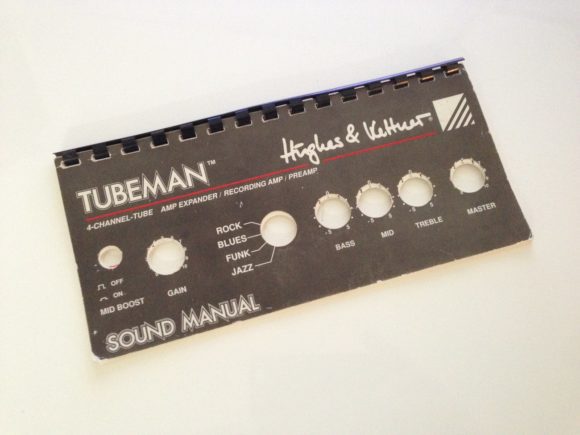Hughes And Kettner Tubeman Mk1 Manual Arts Service

Some guitarists religiously replace the tubes in their amps every two years; others never do so, or not until the amp takes a vow of silence. The two camps don’t exactly see eye to eye, and their preconceptions and differences of opinion are fuel to the flames of debate raging in many forums. We’d like to shed a little light on the topic to banish the darkness from the great tube-swap controversy. So does it pay to regularly swap tubes? Playing guitar at home has never been as convenient, rewarding and motivating as it is today.
It’s always been a treat to revel in the sonic glory of bona fide tube-flavored tone. Tap touche 5 5 keygen crack. Now, though, thanks to innovative technology we can do this even at low volumes in the comfort of our cribs. Some modern-day tube amps deliver stunning sound at low wattages. And if they’re equipped with a power soak, a circuit like the TSC to protect tubes, and a, they offer reliability, utility and outright convenience few would have thought possible just a few years ago. This all adds up to countless hours of bliss for guitarists.
Find great deals on eBay for hughes and kettner tubeman. Shop with confidence. Skip to main content. EBay Logo: Shop by category. HUGHES & KETTNER TUBEMAN from japan (8454. Buy It Now +$59.00 shipping. Tell us what you think. Find mk 1 ads from Newcastle Region, NSW. Buy and sell almost anything on Gumtree classifieds.
But the clock is ticking, and sooner or later some will begin to ponder how much life is left in those tubes. So let’s talk about how many operating hours of rocking good fun you can expect to enjoy and when it’s high time to retire your old tubes. Many tube amp owners, unaware of the facts, are overly cautious, guarding the heart of the amp – the power tubes – like a mother hawk watching over her eggs. Tubes are not as fragile as eggs, but like hatchlings, they do need some tender loving care.

A little healthy curiosity goes a long way: It behooves guitarists to learn more about tubes so they can do a better job of looking after them. As discussed in the, tubes – and those big power tubes especially – are exposed to heavy electrical, mechanical and thermal loads. If you’ve ever touched a working tube with your bare hands, you’ve felt the truth in that. Any component that takes that kind of battering is not going to last forever. It will have to be replaced eventually. The consensus among connoisseurs of tone is that a creeping deterioration of the amp’s sound sets in as soon as tubes are past their prime. When is eventually?
First let’s debunk some of the myths. There’s no voodoo at work here. Good tubes may get your mojo working, but swapping them when they’re on the brink of zombification – the lights are on, but nobody’s home – won’t mess with your juju. The facts aren’t easy for some of us to face, but in the sober light of day our beloved tubes are just wearing parts like the brake pads of a car.
Most of us don’t cling to those for sentimental reasons; we change them when the sparks start flying. On the other hand, aging tubes are not the tone-sucking demons that some people in many forums make them out to be. The tubes in an amp live shorter lives than semiconductors. That explains all those sockets in the chassis.
Guys and gals who earn their living with a soldering iron will tell you that hardwiring tubes into the circuit would be a much better option if technical concerns alone mattered. Better, yes; feasible, no. Swapping tubes with a hot soldering iron is not the sort of pastime most of us envision for ourselves. But I digress.
You may find it reassuring to learn that there are tubes that do their job without complaint for decades, so most concerns are unfounded. And with a little background information, you’ll know all about the few truly important criteria that prompt a tube change. The first criterion is a tube’s maximum life expectancy. Even the most mathematically challenged player should be able guesstimate how much of that life has been expended. We’re not talking about the shelf life of a perishable item here. The only thing that matters is how many operating hours it has put in, and not how many years have passed since it what was made.